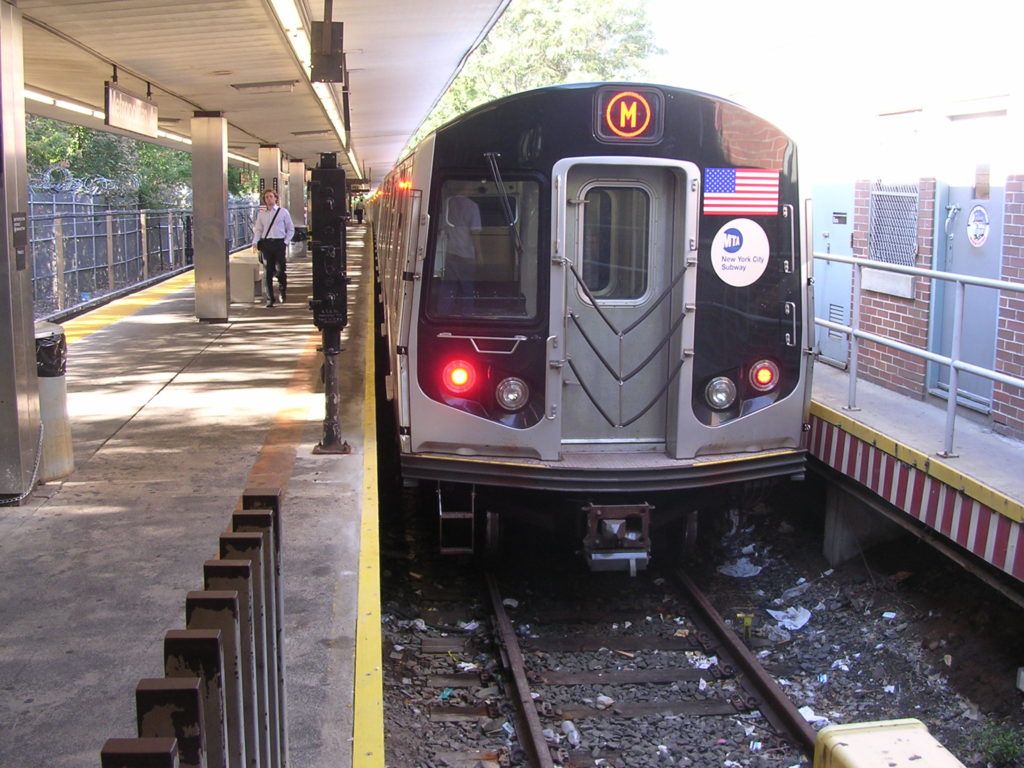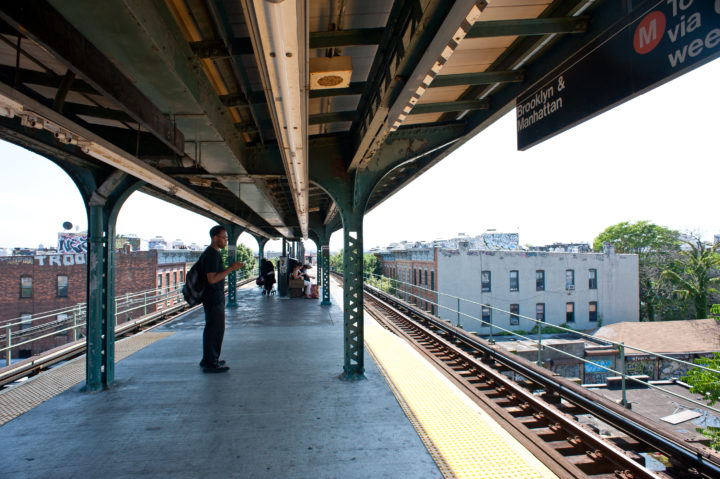If you think the “Summer of Hell” affects only Penn Station and Long Island Rail Road commuters, think again.
Ridgewood, Glendale and Middle Village residents are about to experience some train pain themselves starting this weekend. As of 12:01 a.m. Saturday morning, July 1, the M line will be closed between Metropolitan Avenue and Myrtle Avenue-Broadway in Bushwick for two full months (the M trains will operate instead between Broadway Junction in Brooklyn and Forest Hills).
It’s the start of a $163 million reconstruction project on the Myrtle Avenue Line that won’t be back to full strength for nearly a full year. Some 60,000 customers use the M train between Middle Village and Bushwick every day, and all of them — if they haven’t already done so — will need to figure out another way to get around.
If driving or biking are out of the question, riders will need to resort to buses — both existing local routes and new shuttle service — which will undoubtedly add many minutes to their daily commutes.
Like a boulder thrown into a small pond, the M line’s closure will cause a major ripple effect across the area that will impact even those who normally do not rely on the train line to get around. The most serious effect will be an expected surge of traffic on Metropolitan Avenue — the four-lane strip through Ridgewood, Maspeth and Middle Village that’s normally congested on days when the M train is running well.
Two bridges, one big headache
The MTA will add to Metropolitan Avenue two shuttle bus routes replacing M train service over the next two months. One of the routes will stop at all M train stations between Middle Village-Metropolitan Avenue and Myrtle Avenue-Broadway, while the other route will be an express between Middle Village and Marcy Avenue in Williamsburg. The express shuttle bus will make just one stop — at the Jefferson Street L train station on the Ridgewood/Bushwick border.
Complicating matters is the ongoing reconstruction of a bridge carrying Metropolitan Avenue and Fresh Pond Road on the Ridgewood/Middle Village border over the LIRR Montauk branch. Over the last few months, the project has reduced traffic on Metropolitan Avenue to one lane in each direction between Fresh Pond Road and 62nd Street. These lanes are on the south side of the bridge, with the north side cordoned off by a concrete barrier for reconstruction.
But the city’s Department of Transportation (DOT), in an update on the project that QNS obtained on June 23, announced that it would restore two lanes of traffic in each direction along Metropolitan Avenue for July and August.
“The barrier will be moved out of the roadway of Metropolitan Avenue prior to July 1, 2017,” according to the DOT update. “Once the barrier is moved, two lanes of traffic in each direction will be restored on Metropolitan Avenue, and trucks and buses will once again be able to make the right turn onto Metropolitan Avenue eastbound from Fresh Pond Road northbound.”
Much of the bridge deck has been removed on the Fresh Pond Road side of the bridge, as noted in the DOT update. Even after four lanes of traffic are restored to Metropolitan Avenue, the DOT indicated that work will continue in other areas of the zone. The expected work over the next two months includes deck demolition, preparation for reinforced steel installation and concrete deck paving, and surveying structural repairs made at the bridge abutments and piers.
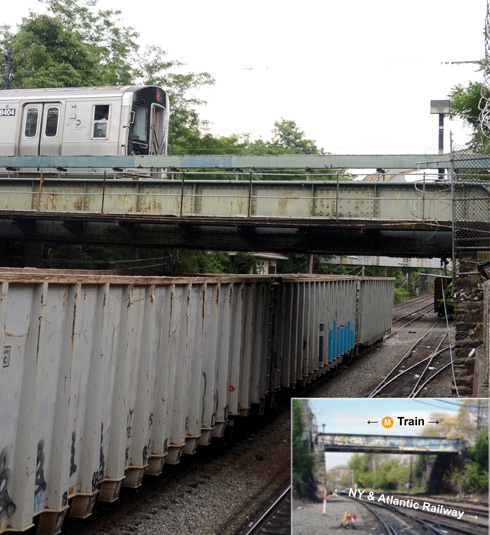
At the same time, the MTA will demolish and rebuild a bridge carrying the M line over the LIRR Montauk branch located just south of the Middle Village-Metropolitan Avenue station. This phase of the M line project, which is expected to be done by Sept. 1, was specifically scheduled for the summer so it wouldn’t affect students commuting to and from nearby Christ the King Regional High School every day.
The new normal
Things, however, won’t be back to normal for M train riders in September. The MTA will then turn its attention to demolishing and rebuilding a concrete viaduct that links the Myrtle Avenue Line to the J/Z line over Broadway in Bushwick. As a result, the MTA will introduce a shuttle train that will operate between Middle Village-Metropolitan Avenue and Myrtle-Wyckoff Avenues, where riders will need to transfer to the L train.
The rest of the M line will be closed between Myrtle-Wyckoff Avenues and Myrtle Avenue-Broadway for another eight months while the viaduct is rebuilt.
“The MTA’s top priority always has been and will continue to be providing safe and reliable service to our customers and this work is absolutely critical to the long-term viability of this growing corridor,” said New York City Transit Acting President Darryl Irick. “While there is no other option than complete replacement, we’ve engaged with affected communities to address their concerns, and hope they understand the urgency behind our decision and can look forward to improvements in service once the work is complete.”
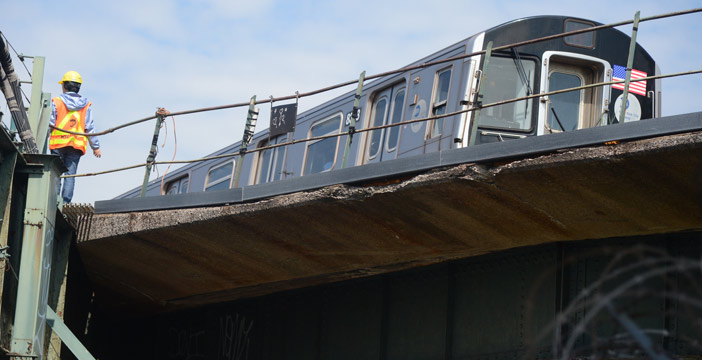
Drivers also won’t get a break in September, as the DOT will again close off the north side of Metropolitan Avenue at Fresh Pond Road to continue bridge repairs there. Traffic will again be reduced to one lane in each direction. The project itself is projected to be wrapped up in the summer of 2018.
Thousands of residents in Glendale, Middle Village, Ridgewood and surrounding communities rely on the M train to get to and from work every day. On a good day, it’s about a half-hour train ride from Middle Village to Essex Street in Lower Manhattan.
Obviously, once the M train is closed this summer, commuters will need to spend extra time on the roads in the mornings and afternoons. They can take the shuttle buses to connect to the J or M trains in Brooklyn — or, as Community Board 5 District Manager Gary Giordano believes, many of them will opt to travel to subways in other parts of Queens.
“I think you’re going to see a significant number of people who rely on the M train going toward Queens Boulevard,” Giordano said in a phone interview. That means an increase in ridership on local bus lines connecting to the E, F, M or R trains along Queens Boulevard.
The Q29 services Glendale and Middle Village along 80th Street and Dry Harbor Road and makes stops at the Woodhaven Boulevard subway station. The Q38 bus line runs a loop through Middle Village and Maspeth, and stops on the Ridgewood/Middle Village border; riders can take it in either direction to reach the Woodhaven Boulevard or 63rd Drive stops. There’s also the Q58 bus — which has repeatedly had the dubious distinction of being the slowest bus line in Queens — which can take riders from Ridgewood, Maspeth and Middle Village to the Grand Avenue station.
Each of these lines have congestion issues of their own during rush hour.
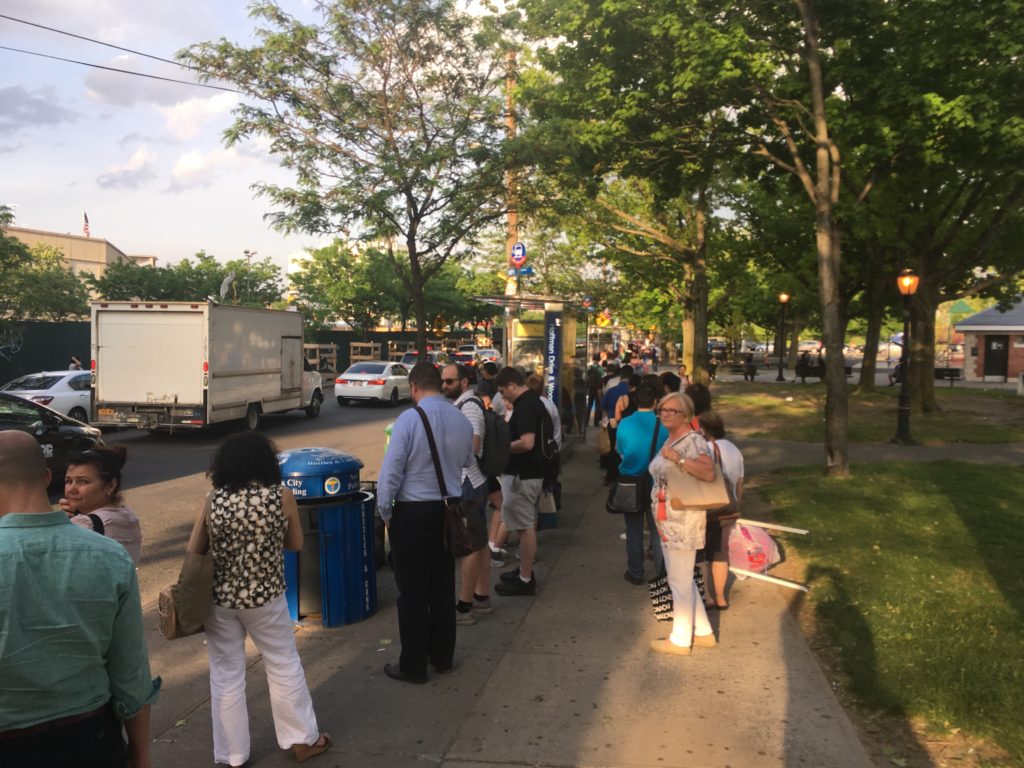
Giordano said he’s spoken with MTA representatives about bolstering local bus service on these other routes, and the MTA has indicated it would make such an effort. He also noted that the board expressed similar concerns about congestion on the Q55 route along Myrtle Avenue, which connects riders to the Myrtle-Wyckoff Avenues station for L and M train service.
But Giordano’s concerned about the bigger picture — an aging infrastructure that’s finally catching up to the city. Much of the subway system still relies upon 20th-century technology to keep moving, and many of those parts — as evidenced in recent months — are breaking down all too frequently.
The coming years will bring other extensive repair projects that will cause commuters long-term inconvenience. Soon after the M line is brought to full repair in 2018, the MTA will then shut down the L train tunnel under the East River to permanently repair damages caused by Hurricane Sandy nearly five years ago. Similar shutdowns will likely be required on other segments of the subway system to update it.
“We’re going to need to get better and better at moving people around during construction projects,” Giordano said. “The trains are absolutely a critical part of daily life in New York City. We’ve got to get them in as good of a shape as possible.”
